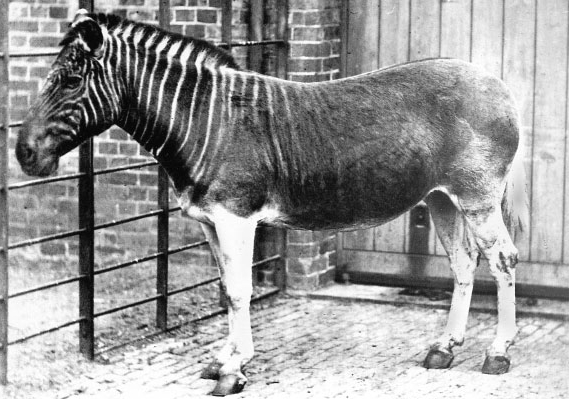Quaggas in the process of being revived after extinction
The unique stunning beauty of the quagga was snuffed out in the late 1800s. The Quagga Project is working to bring them back to life.









The above photos are thought to be of the only live quagga specimen to ever be photographed. Take note of the distinguishing pattern across its body. The front half offers the handsome shock of a design similar to a zebra, but as seamlessly as the stripes guide your eyes across this noble creature, the pattern appears to fade into a relaxed, modest horse-like texture.
Equus quagga quagga, or simply the quagga, is an extinct animal. They were hunted to death by Dutch settlers and Afrikaners in South Africa for their meat or skins. The only remnants of this majestic species were the photographs seen above, 23 skins and paintings of the alluring beast in all its glory.

Painting of a quagga by Nicholas Marécage, 1793
Quaggas are thought to have been 257cm long and 130cm tall at the shoulder, slightly smaller than zebras. They had zebra-like brown and white stripes on their head and down to their necks and torso. The stripes gradually blended with the red-brown backside of the animal. They had a white belly, a striped mane and a long dorsal stripe across their back. This pattern distinguished them from any other equids. They were also known to display polymorphism, meaning that many quaggas showed different patterns. Some had minimal stripes while others were nearly covered in them.
When the last Quagga died in 1883, most people believed that the animal would vanish into history in an almost romantic fashion, much like the wooly mammoth. Unbeknownst to them, one quagga skin still had a layer of tissue containing a minute amount of fat, from which genetic information could be extracted. Taxidermist Reinhold Rau discovered this treasure as he prepared to mount the skin on a wall.
After genetic information had been retrieved from the lipid samples, tests were conducted which revealed game-changing information. As it turned out, Quaggas were not a separate species of zebra, but rather a subspecies of the plains zebra. The closeness in the DNA between quaggas and plains zebras led Rau to start the Quagga Project in 1987, with the goal of selectively breeding zebras in order to recreate the lost subspecies.
33 years and 5 quagga generations later, we are beginning to see the fruits of Rau's labour. The "Rau quaggas" are a near recreation of the original species that was brutally hunted to extinction 100 years ago.
All of the following photos are by courtesy of The Quagga Project.




For more information of Quaggas and the Quagga Project:


Comments
Post a Comment